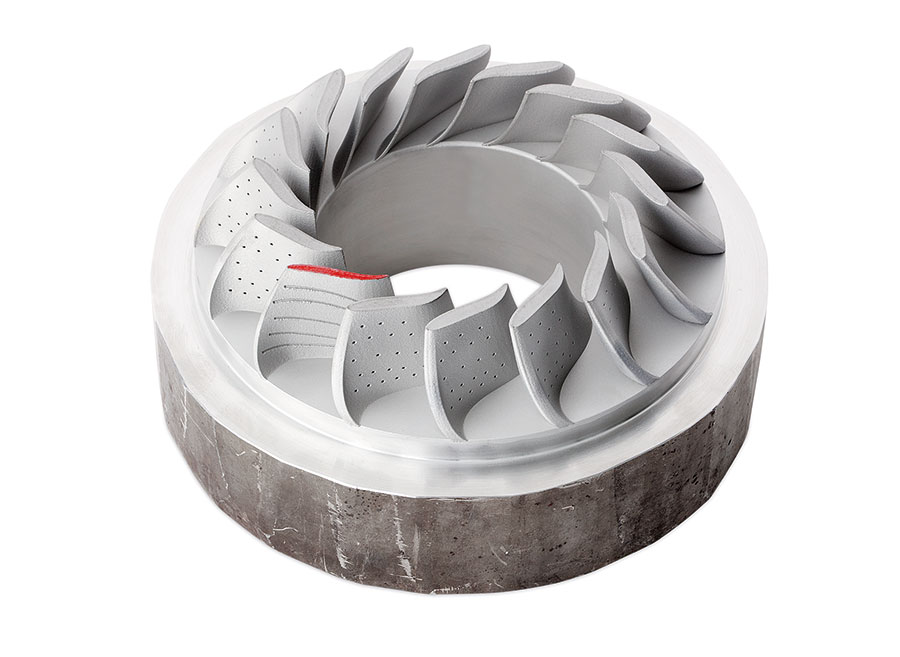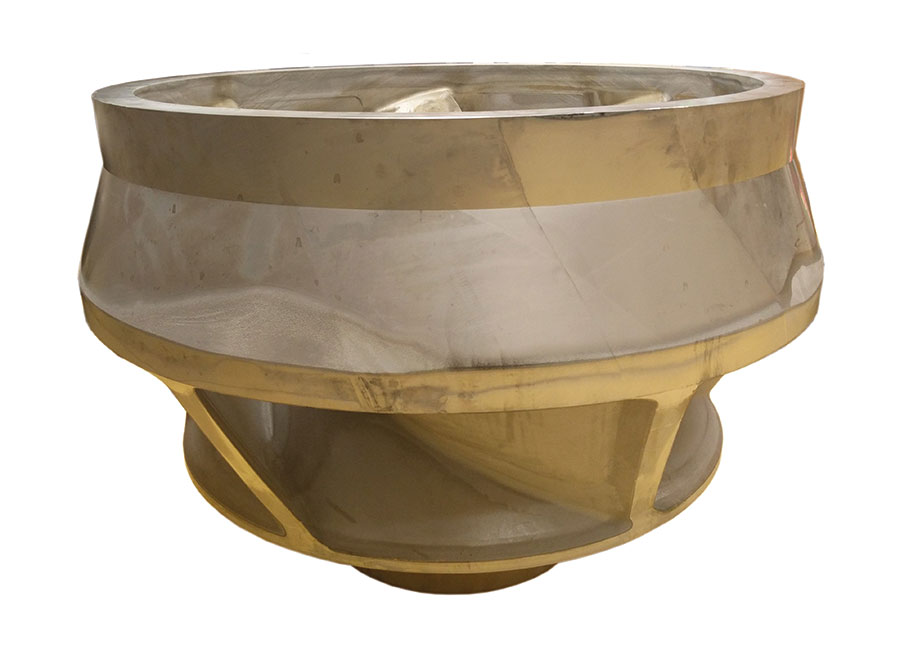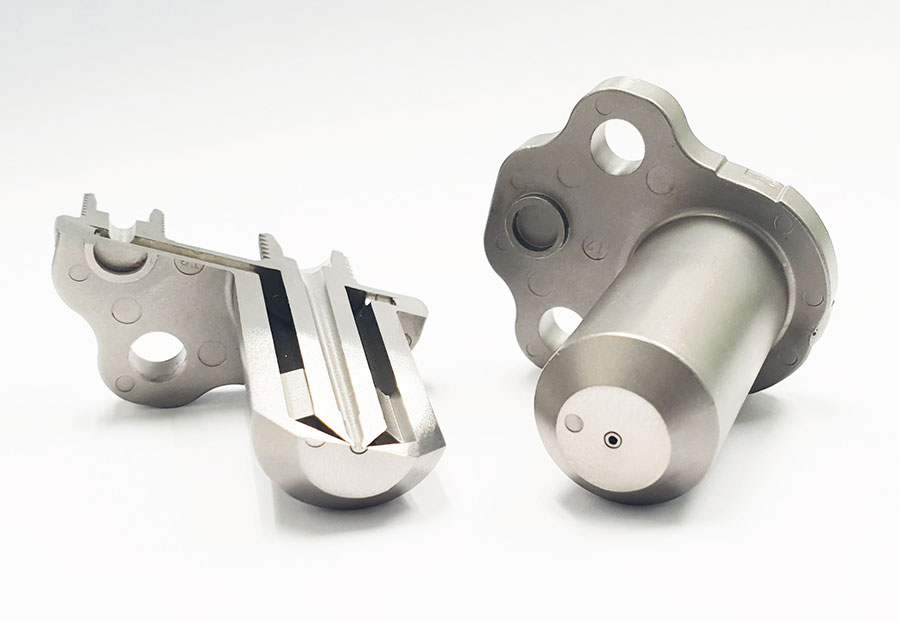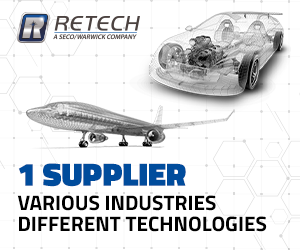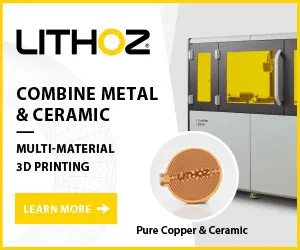EPMA Excellence in Powder Metallurgy Awards 2018
During its Euro PM2018 Congress and Exhibition, Bilbao, Spain, October 14–18, 2018, the European Powder Metallurgy Association (EPMA) revealed the winners in its 2018 Powder Metallurgy Component Awards. The awards are open to all who manufacture components using powder metallurgical processes, and the 2018 award consisted of the following component categories:
- PM Structural (including Hard Materials and Diamond Tools parts)
- Additive Manufacturing
- Hot Isostatic Pressing (HIP)
- Metal Injection Moulding (MIM)
The winners of this year’s Powder Metallurgy Component Awards are as follows.
PM Structural Component award
This year’s PM Structural Component Award winner was Gevorkyan, s.r.o, Vlkanová, Slovakia, for a driving flange designed in cooperation with a leading power tools producer. According to its designers, the part is brand new and has never been produced using any other technology.
The part was initially conceived for CNC machining. By instead adopting PM technology for its production, Gevorkyan stated it was able to achieve a significant reduction in price in comparison to conventional manufacturing technologies. It was stated that the new design also reduces the time required to replace a worn disc from a minute to just a few seconds.
Gevorkyan’s driving flange is compacted on a CNC hydraulic press using all three upper axes and all four lower axes. To ensure a high hardness for the surface layer and tough core of the part, case hardening is also used. CNC turning is then used to ensure a precise internal diameter, and CNC milling used to create four counter bars for screws.
The company stated that it expects to spread the concept globally in the coming years, and aims to completely replace the older generation of flanges with the new design.
Additive Manufacturing award
The award in the Additive Manufacturing category was presented to Rosswag GmbH, Pfinztal, Germany, for its Forgebrid® process. The production method combines open die forging and Laser Beam Powder Bed Fusion (LB-PBF) processes, benefitting from the advantages offered by each process. To manufacture a component, a basic body is conventionally forged and machined to produce a plane surface. Onto this surface, the functionally optimised section of the component is added using LB-PBF.
Using this combined method enables Rosswag to preserve resources and thus save production costs, in addition to reducing machining time and the consumption of coolants and lubricants. Moreover, the material remnants produced during sawing and forging of the component base can be recycled into metal powder for use in the Additive Manufacturing process.
Rosswag stated that the forged component area offers excellent mechanical-technological properties, especially with regard to fatigue strength. The complex segments of the part, produced by metal AM, are then manufactured in such a way as to add value which could not be achieved by conventional manufacturing. The hybrid production process is therefore an ideal method to meet safety requirements and still achieve functional optimisation of the component.
Hot Isostatic Pressing award
A near-net shape component for use in the nuclear power sector was the winner in the Hot Isostatic Pressing (HIP) category. The component, a reactor coolant pump impeller, has a large dimension and complex geometry, which both pose significant production challenges.
Such components with large, complex shapes, were traditionally manufactured by casting, but the lifetime of these products is limited due to the ageing of the material. Alternative approaches, consisting of machining impellers from forged ingots, offer an improvement of the mechanical characteristics. However, in the case of a reactor coolant pump impeller (RCP) produced in this way, it is necessary to start with a 4000 kg ingot to finish with a 600 kg impeller, resulting in 85% material wastage.
On the basis of this, a consortium composed of Framatome, Aubert & Duval, Ventana Group, Metalscan and institutional laboratories (Université de Bourgogne, ARTS and CEA) established the manufacturing sequence for a large-dimension impeller in 316L austenitic stainless steel by means of PM HIP processes with a near-net shape (NNS) approach.
The tooling of this impeller has been designed by 2D/3D simulation and then is machined in low carbon steel elements. Once assembled and welded, the low-carbon steel container is filled with 316L powder and HIPed. After the HIP cycle, a rough machining is performed to open hydraulic channels and facilitate the chemical pickling. This approach aims at reducing the machining and finishing operations after HIP as much as possible, in particular on the blades of the impeller, thereby limiting the final cost of the part and reducing the production time.
The part produced exhibited the expected geometric features (+/- 2 mm), fine grain size (around 50 µm) and isotropic microstructure and excellent mechanical properties (Rp0.2=290 MPa, Rm=580 MPa, A%=57).
Metal Injection Moulding award
The award for a metal injection moulded component was given to AMT PTE Ltd, Singapore, for its one piece nozzle for automotive applications. The MIM nozzle featured a good finish with complex internal channels in a sustainable and economical way. This product was said to have opened up an entirely new application for MIM process capability, and AMT stated that it was the most complex part that it has produced to date.
Development efforts for the component focused on controlling the distortion of the plastic inserts during MIM, as the high injection pressure and temperature could greatly affect the insert integrity. The challenge was to maintain a high packing pressure in the inner core channel, as any loss in pressure could lead to weakness and result in cracks.
Identifying the ideal injection parameters for a good overall part was said to be highly challenging. In addition, the tip of the nozzle, the diameter of the hole and the gap surrounding it were all controlled in the micron range, and produced using MIM without secondary operations. These critical features were achieved to a high definition.
The one piece nozzle is applied in a Selective Catalytic Reduction (SCR) system for commercial vehicles in Europe to comply with the Euro 5 and Euro 6 standards. Urea is connected to the centre through the hole, and compressed air connected to the other channel. The compressed air is then pumped into the nozzle, exiting though the ring at the nozzle tip. This generates a low-pressure region at the tip, producing a venturi effect which draws the urea from the middle channel and sprays it onto the SCR system, reducing the exhaust NOx to N2 and H2O.
The undercut internal channel of the part can reportedly only be produced using AMT’s patented In-Coring™ technology and is thus specially designed for MIM processing. Compared to the production of a similar part of a corresponding quality and finish by conventional machining and brazing, AMT reported a reduction in costs of up to one third.




